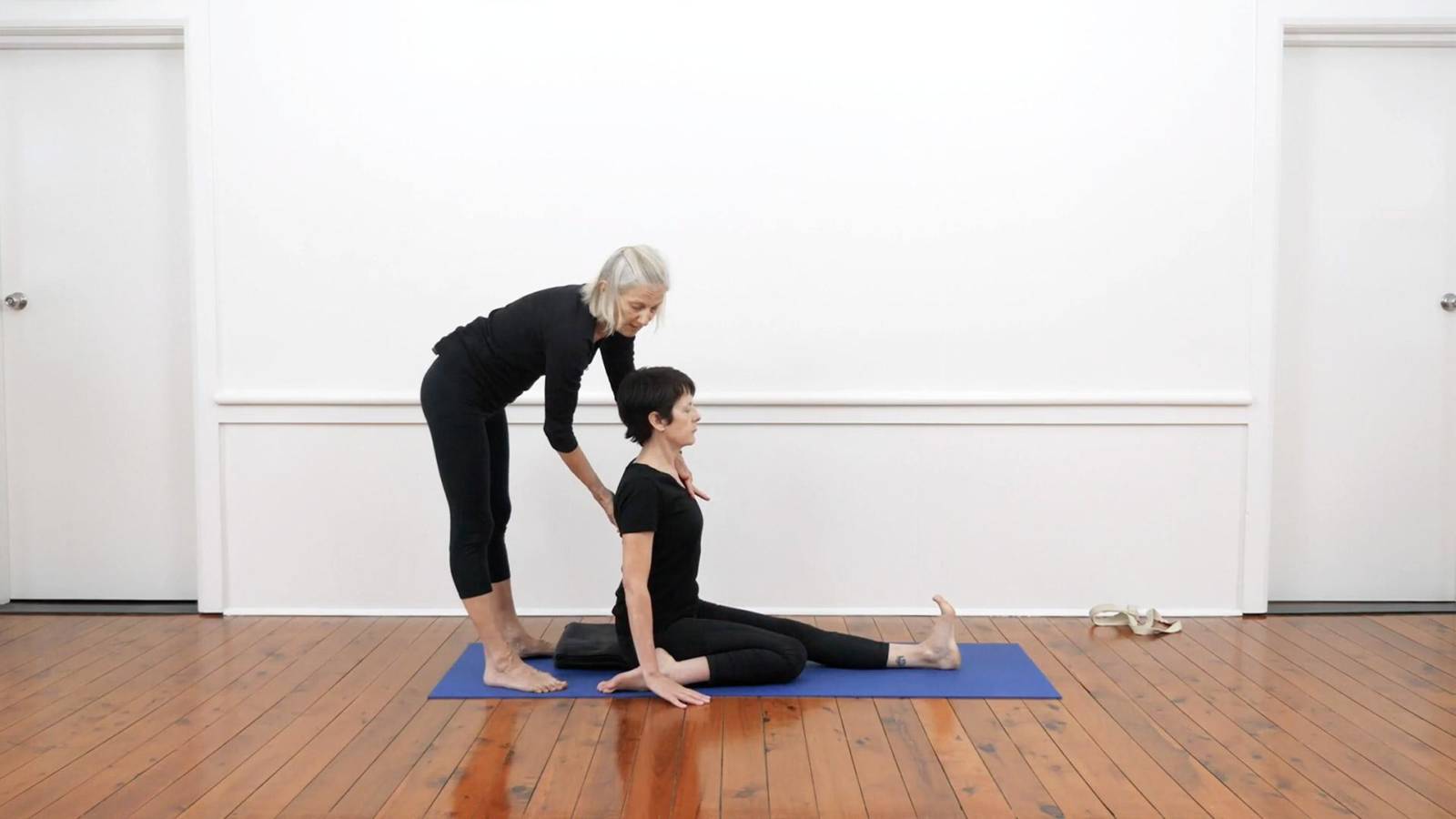What is Triang Mukha Eka Pada Paschimottanasana?
Seated, forward bend. This forward bend works more deeply and actively into the hips and is a more challenging pose in terms of maintaining both buttocks to the mat. It is included in the forward bend sequence, typically following Janu Sirsasana and Ardha Baddha Paschimottanasana.
When to use Triang Mukha Eka Pada Paschimottanasana?
Maintaining the evenness of the hips is challenging and height under the Dandasana leg may be needed. The Virasana leg brings added benefit to the knee, through the intense bend and release action. The Virasana leg works into the arches of the feet, the knees, ankles and inner groins. Working actively in the pose, tones and strengthens the abdominal muscles. Keeping the legs stable and bringing length to the Dorsal spine works to create mobility to this area and flexibility to the spine and intercostal muscles.

